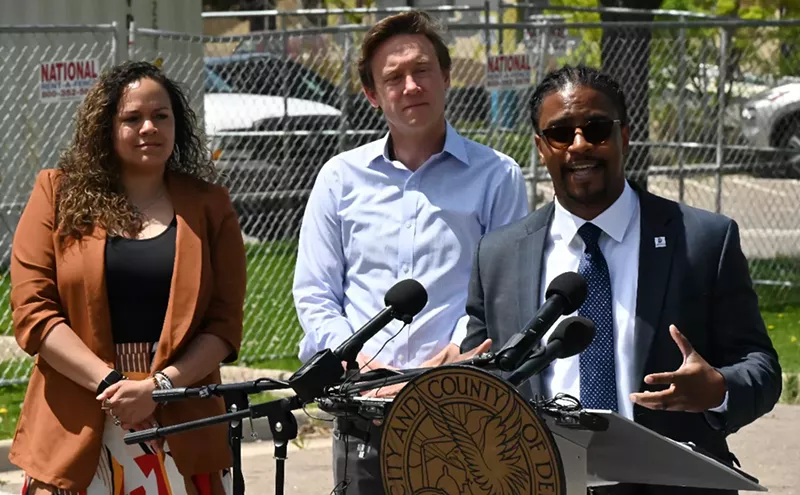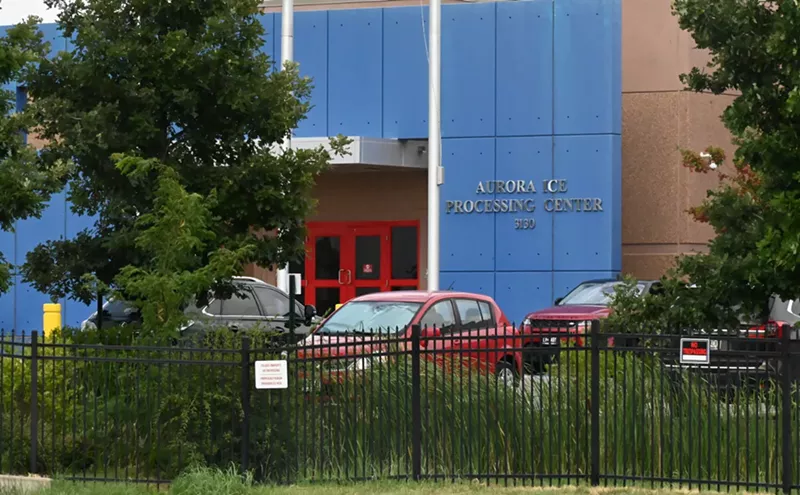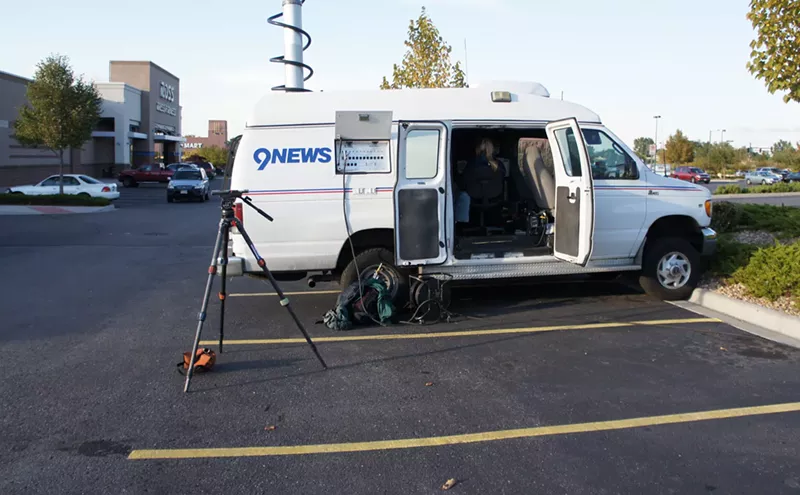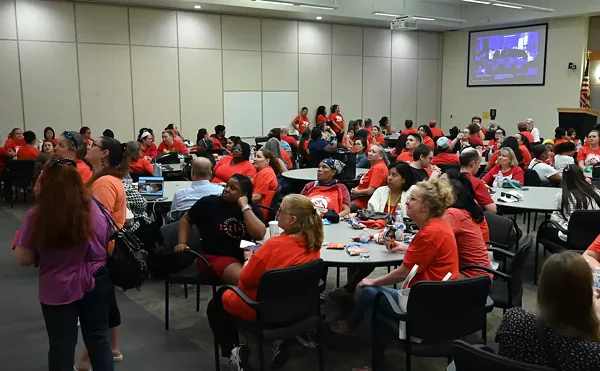Is there any topic that gets Denver residents going more than growth — and what comes with it? All over town, people are talking about high rents, displaced tenants, traffic congestion and, in my neighborhood, renewed parking wars, with two entire blocks now lost to a project that’s closed two streets and often makes a side road off limits, too.
One morning right after the new year, I pointed out to the driver of a construction truck parked in front of my house that the 2100 block of West 28th Avenue is two-hour residential parking only, as are so many neighborhoods around town that are located in commercial (and now construction) hot spots. “And it’s going to get worse,” he pointed out helpfully, not making a move to take his truck elsewhere. “You know what we’re building...”
Yes, I do: a 270-unit (at last count) “luxury” apartment development that promises (for now) to have at least one parking spot per bedroom for its tenants, which is certainly a luxury compared with what some developers have delivered in Denver. The project replaces the Denver Public Schools Contemporary Learning Academy (now located at 200 East Ninth Avenue), and I don’t begrudge the DPS a penny of the $12 million it made selling the property. Nor do I blame Richman Ascension Development for wanting these parcels high on the bluffs above I-25, which come with quite a view of downtown.“It’s about the quickest I’ve ever closed on a piece of land,” Richman’s agent told me. “I think it’s one of the coolest places.”
Since I-25 is our back yard, the residents of this neighborhood — which will soon grow by several hundred — won’t lose that view. But these days, the view has a few new features: From my kitchen window, I can see six cranes, once again the official bird of Denver. And that’s not counting the behemoth that suddenly appeared down the block a few weeks ago.
Late one Friday I returned to my ’hood to find that all the parking on my officially historic, definitely alley-less block was gone, and that the side-street safety valve had been festooned with no-parking signs, too. I learned why the next morning: At the stroke of eight, construction crews blocked the street with a giant crane that they were maneuvering into position on 28th, where it would deposit concrete slabs in the deep holes they’d already excavated, shaking the foundations of Stoneman’s Row, a designated historic district both in Denver and nationally, in the process. A supervisor brought his young son to see the action; he parked for the morning in the briefly empty spot in front of my house that I’d been too slow to snag.
Since no zoning changes were required for this development, there were no community hearings — but shouldn’t the city require at least some outreach when a project is this massive? Wouldn’t it be a neighborly gesture to post notes on nearby doors that a street is about to be closed for a day, a week, a year? Aren’t there some rules requiring developers to notify neighbors of what’s to come? In a word: no.
In response to complaints from neighborhoods crankier than mine, Denver Development Services has posted a page of “Construction Procedures for Neighbors to Know,” which includes when construction noise is allowed, where construction equipment should be stored, and when “owners of adjacent properties” should be notified of certain procedures that might affect them. So far, apparently nothing in this vast project has justified notifying the residents of West 28th Avenue...of anything. And there are many, many other projects around town that are causing bigger problems for their neighbors.
Several of those are farther west, in a part of town that’s been called the “poster child” for development controversies. On Saturday, Denver City Councilman Rafael Espinoza hosted a packed Northwest Denver Historic Preservation workshop that discussed many issues, including the coming update of Blueprint Denver, the decade-old master plan for Denver. (Read Chris Walker’s March 3 cover story, "Zoned Out," for the details.) Espinosa, who displaced incumbent Susan Shepherd last May after she was labeled "pro-development," is an architect whose district now stretches from the northwestern boundaries of Denver to I-25, and includes Stoneman's Row.
He's been taking the lead for pushing not just for historic structures, but putting more controls on development in Denver in general. And I asked him: Is it too much to ask that any update of Blueprint Denver include a requirement that developers let neighbors know the schedule and duration of their projects?
“You hit the nail on the head,” says Espinoza. “There’s no obligatory requirement.”
But there could be — and should be. If people all over Denver are talking about growth, why not the developers themselves?
This is an updated version of a column that appeared here in early January; read the original here.

Audio By Carbonatix
[
{
"name": "GPT - Billboard - Slot Inline - Content - Labeled - No Desktop",
"component": "23668565",
"insertPoint": "2",
"requiredCountToDisplay": "2"
},{
"name": "STN Player - Float - Mobile Only ",
"component": "23853568",
"insertPoint": "2",
"requiredCountToDisplay": "2"
},{
"name": "Editor Picks",
"component": "17242653",
"insertPoint": "4",
"requiredCountToDisplay": "1"
},{
"name": "Inline Links",
"component": "18838239",
"insertPoint": "8th",
"startingPoint": 8,
"requiredCountToDisplay": "7",
"maxInsertions": 25
},{
"name": "GPT - 2x Rectangles Desktop, Tower on Mobile - Labeled",
"component": "24956856",
"insertPoint": "8th",
"startingPoint": 8,
"requiredCountToDisplay": "7",
"maxInsertions": 25
},{
"name": "Inline Links",
"component": "18838239",
"insertPoint": "8th",
"startingPoint": 12,
"requiredCountToDisplay": "11",
"maxInsertions": 25
},{
"name": "GPT - Leaderboard to Tower - Slot Auto-select - Labeled",
"component": "17676724",
"insertPoint": "8th",
"startingPoint": 12,
"requiredCountToDisplay": "11",
"maxInsertions": 25
}
]











